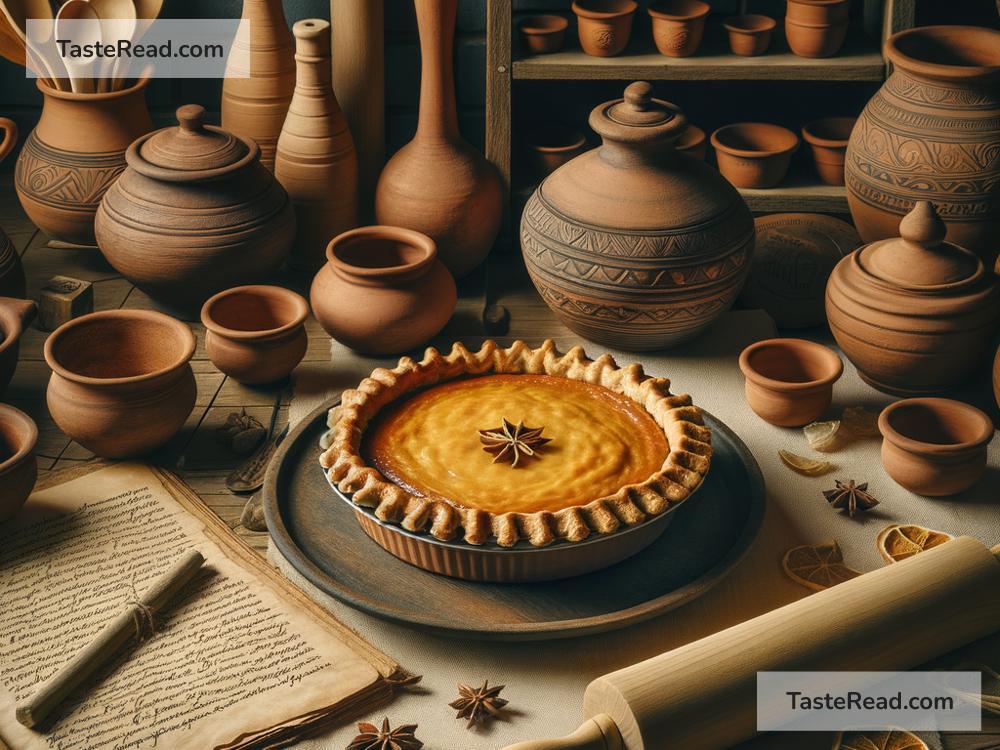The Origins of the First Custard Pie in Ancient Tales
Custard pies have been loved for centuries. Today, we see them used in comedy, eaten as desserts, and featured in celebrations. But where did they come from? Believe it or not, the story of custard pies stretches back to ancient times. Their origins are tied to both culinary history and colorful legends. Let’s explore how the humble custard pie came to be.
What Is a Custard Pie?
Before we dive into its history, let’s first understand what a custard pie is. A custard pie is a dessert made with a simple pastry base filled with a mixture of milk, eggs, sugar, and vanilla. After baking, the result is a rich, creamy filling surrounded by a flaky crust. The custard pie has long been a favorite treat because of its smooth texture and sweet taste.
Though culinary experts have developed countless variations over time, the core ingredients have remained largely the same. What’s fascinating, however, is how this dessert began its journey in human history.
Ancient Beginnings: Early Forms of Custard
Historians believe that custard-like recipes date back to ancient civilizations. While the specific “pie” structure may not have existed yet, early versions of custard were created by cultures as far back as Ancient Rome. Romans were skilled at combining milk with eggs for savory and sweet dishes, creating thick, creamy mixtures that resemble custard today.
One Roman recipe, documented by Apicius, suggests that milk, honey, and eggs were whisked together to form a smooth filling. This mixture might have been layered with bread or served as a pudding-like substance. It wasn’t quite a custard “pie,” but it set the foundation for the concept.
Custard recipes also appeared in other ancient cultures. In Persia, cooks made egg-based desserts flavored with rosewater and sugar, creating textures similar to custard. The concept spread worldwide over centuries, evolving with each region’s ingredients and techniques.
Medieval Times: The Pie Comes to Life
During the Middle Ages, the idea of encasing food in pastry began to gain popularity in Europe. Pies were convenient for baking and carrying meals, especially during feasts and festivals. This period marked the transition from custard as a standalone dish to custard being baked inside a pie crust.
Eggs were plentiful in medieval kitchens, and dairy farming provided milk and cream. These were the perfect foundation for custard. European cooks began experimenting with blending the creamy custard filling and enclosing it in pastry shells.
Records hint that custard pies were common in England and France during the 14th century. Early custard pies were simpler than modern ones, often flavored with spices like cinnamon and nutmeg. These pies were considered luxurious treats, enjoyed by royalty and the upper classes.
Custard pie recipes even appeared in medieval cookbooks. One famous example is “The Forme of Cury,” a collection of recipes compiled by English court cooks in the 14th century. This book included instructions for creating rich custard fillings, often sweetened with sugar or honey, and baked into flaky crusts.
Legends and Stories of Custard Pies
As custard pies gained popularity in Europe, they also started appearing in folklore and stories. Many ancient tales feature pies as symbols of abundance, mischief, or celebration.
One entertaining legend involves the playful use of custard pies in royal courts. According to the story, jesters would sometimes throw pies at nobles or kings in a form of comic relief. This may be the earliest connection between custard pies and comedy, which we still see in slapstick humor today.
Another tale suggests that custard pies were a favorite dessert during medieval festivals. It’s said that peasants would bake custard pies to honor annual harvest celebrations. These events were full of laughter, dancing, and sharing of food, making custard pies a delicious centerpiece.
In some stories, custard pies were even used as peace offerings. King Arthur’s knights, eager to resolve disputes, would bring gifts of baked goods—including custard pies—to make amends.
The Spread of Custard Pies Worldwide
As trade expanded in the Renaissance era, custard pie recipes began traveling across countries and continents. French chefs perfected the art of making custards, inspiring creations like flans and tarts. Meanwhile, British settlers brought custard pie recipes to new colonies.
By the 18th and 19th centuries, custard pies had become more accessible to common people. The ingredients—milk, eggs, sugar, and flour—were widely available, allowing home cooks to prepare the desserts affordably.
In the United States, custard pies became highly popular during the colonial era. American pioneers adapted European recipes, creating versions like pumpkin pies and sweet potato pies using local ingredients.
Conclusion: A Timeless Treat
The origins of the custard pie reveal just how far back our love for sweet, creamy desserts goes. From Roman puddings to medieval pastry innovations, the custard pie has a rich history rooted in ancient kitchens and folklore.
Today, custard pies remain beloved worldwide. Whether enjoyed during holidays, baked for loved ones, or even thrown for laughs in slapstick comedy, the custard pie symbolizes joy and creativity. Its humble beginnings remind us of humanity’s enduring passion for food and flavor.
The next time you take a bite of custard pie, you’re not just enjoying dessert—you’re tasting a slice of history.


